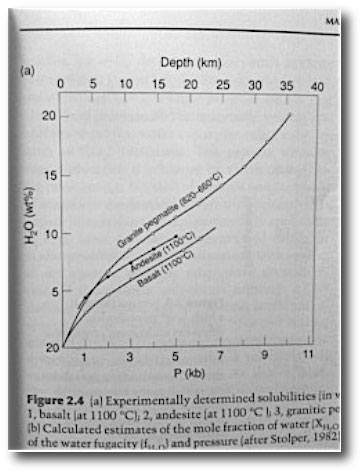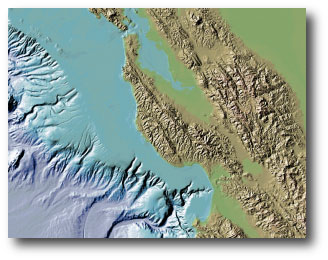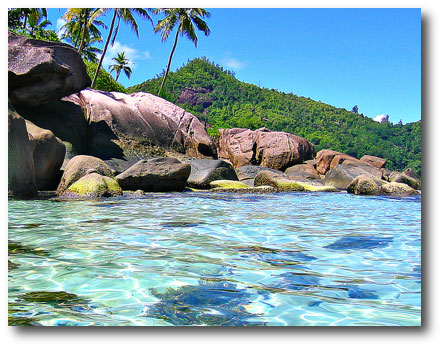I’ve been reading a textbook on ore-forming processes as part of an attempt to get a little more fluent in geology, and I ran across a plot that is certainly well known to many, but was an eye-opener for me:
The plot charts the solubility by weight of water in several common igneous rocks as one moves deeper into the lithosphere. The take-away message is that even at modest depths, rocks can be very heavily hydrated and are capable of harboring a very large amount of water.
The plot brought to mind something that, to my highly inexpert eye, has always seemed a remarkable coincidence. The volume of water in Earth’s oceans has an average depth of ~4000 meters, leading to a sea-level that does a pretty fair job of outlining the continental margins (which mark the boundaries between denser (but thinner) basaltic crust and lighter (but thicker) granitic crust. Only about 20% of the total continental crust is overlaid by water.
In the extrasolar planet context, an interesting question is whether the situation here on Earth is unusual. Many of the planets that Kepler has found (and will be finding) contain water mass fractions that are considerably larger than Earth’s. Is it reasonable to expect that they’ll have deep oceans that uniformly cover the planets, or is there some sort of mechanism involving water of hydration that maintains a seafloor-continent dichotomy even in the presence of a lot of water? As far as I can tell, this question hasn’t been answered definitively.
The naive answer seems to be along the following lines. Imagine that a terrestrial planet forms in such a manner that the mantle rock is heavily hydrated. Given that mantle rock can easily retain a water mass fraction measured in tens of percents, one could start out with a planet that contains many oceans worth of water, but in which substantial portions of the surface are dry.
When rock melts, the water of hydration is squeezed out. (Migration of this water into the surrounding country rock leads to the mineralized veins that are the basis for many of Earth’s great ore deposits.) On an ongoing volume-weighted basis, most of the melting is taking place beneath the spreading centers that form the mid-oceanic ridges. Every year, of order 300 cubic kilometers of melt are produced, several cubic kilometers of which are erupted to form fresh ocean crust. Coupled with mantle convection, this means that the mantle unburdens its water on a timescale of order a billion years. Some of the water is subducted back down, but this sink is less effective than the source, meaning that the water likely ends up on or near the surface.
So one can imagine planets (perhaps with mantle convection less vigorous than Earth’s) in which continents are gradually submerged as water is squeezed out of the mantle. Not, perhaps, a bad way to go. The world’s best beaches are those of the Seychelles islands — a handful of granitic specks in the vastness of the Indian ocean — the highest peaks of the submerged continental Mascarene Plateau.





The solubilities in the graph are for silicate melts, not for solid rocks. The names on the curves simply identify rock types that have similar bulk compositions to the melts. The amount of water that can be stored in rocks at depth has to do with the phase relationships/stabilities of hydrous minerals (they tend not to be stable deep in the Earth) and the solubility of hydrogen in nominally anhydrous minerals. The amount of water that can generally be stored in rocks is substantially smaller than that for melts.
Thank you for the correction. As I was careful to point out, I am not expert in this area, but am trying to get up to speed. Is there a rule of thumb for the amount of water that can potentially be stored in mantle rock? If so, it seems that the back-of-the-envelope estimate can be recast to re-estimate the time-scale for convection and seafloor spreading to squeeze the water out of the mantle.
Looking “deeper” into the issue, this article: http://adsabs.harvard.edu/abs/2002Sci…295.1885M seems to provide a good starting point.
Hi Greg,
While the exact state of the lower mantle is not tightly constrained (~0.5 to 3 hydrospheres), one important thing to remember is that the solubility is only an upper limit to the actual water content. It is unlikely that the Earth (or any other terrestrial planet) is anywhere close to water saturated at depth. It the case of magma (shown in your diagram), saturation is achieved by crystallizing anhydrous minerals, thus concentrating the water in the residual melt until it saturates (or super saturates, in the case of explosive volcanic eruptions).
As for Earth, the oceans probably condensed fairly early on (The early earth cools through the water critical temperature in a few million years), but the continents take hundreds of millions of years to form. So there are theories that for the first 1.5 billion years of earth history, there was very little emergent land because the continents hadn’t grown big enough to poke through the surface of the ocean.
Hi All
There’s been more than one planetologist suggest that most otherwise Earth-like planets are too hydrated – more like the 3.3% of meteorites, rather than the 0.1% of Earth – and thus totally lacking in dry land. One wonders just how Earth avoided being drowned.